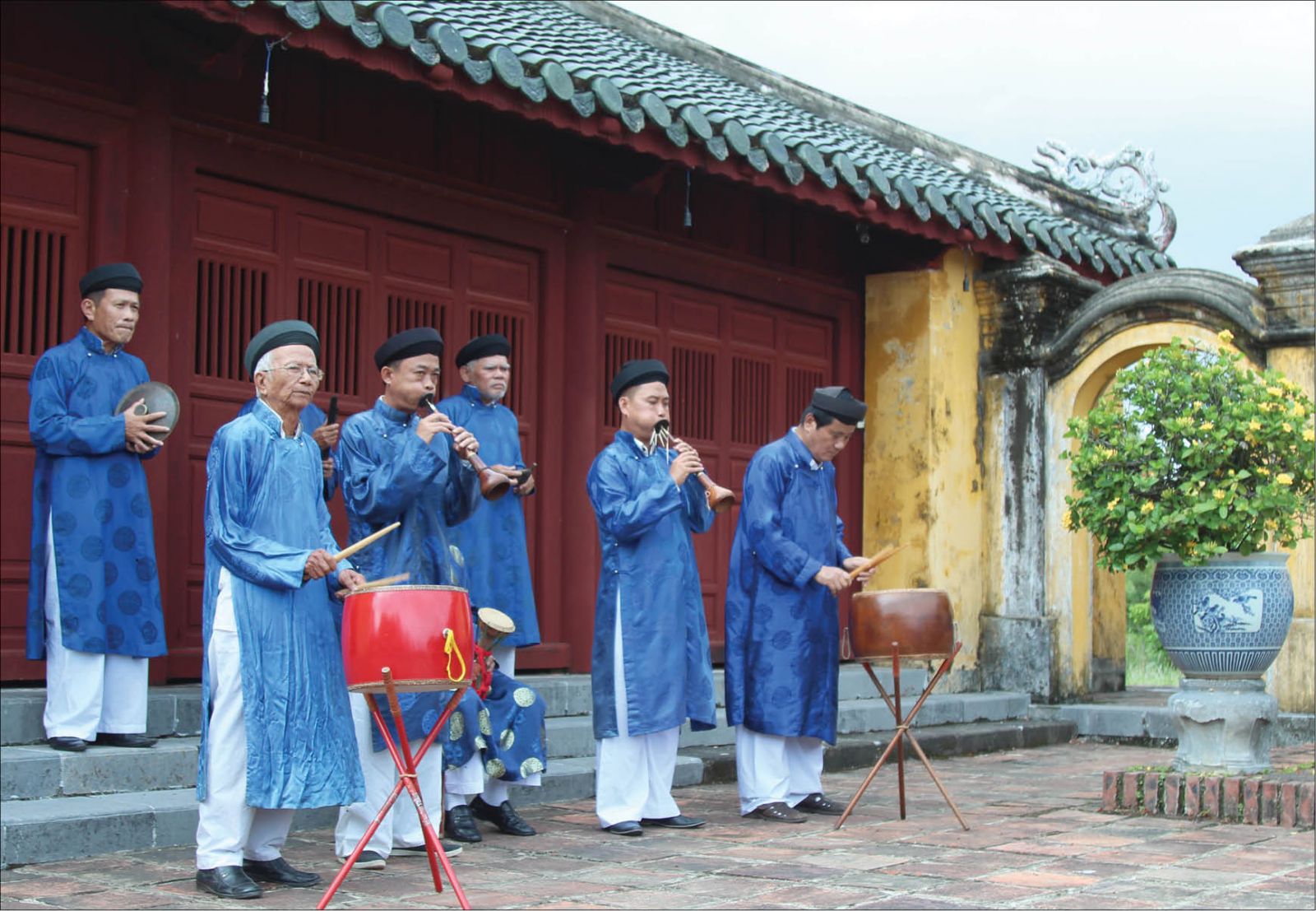They themselves are the inspiration that helps to spread the love for the heritage.

Phu Xuan Court Music Club is playing “Tam Luan Cuu Chuyen”
Over time, many pieces of court music have been lost. For some reasons, many artisans quit their jobs. Some of them perform only at village festivals, family reunions and funerals for a living.
Collecting materials and doing contrastive analysis is extremely difficult and time-consuming because of the routine of passing over the career to descendants within the family only and the special hands-on character of traditional music.
In the process of looking for "fragments" of old pieces of court music, as soon as information about an artisan is heard, the research team come to meet, record, film and interview him immediately. The pieces are then notated, analyzed, compared and contrasted to find the original.
According to Hoang Trong Cuong, Vice-Director of Hue Traditional Royal Theatre of Art, artisans are keeping original secrets of the career, but not all of them are willing to pass them down to others. (On a positive side, it is a way to respect and preserve the royal art.) Therefore, on our field trips, we try to establish a sympathy between researchers and artisans so that they are willing to share everything that they inherited from older generations in an honest and accurate manner.
At Hue Traditional Royal Theatre of Art, a piece of court music is performed after it has been researched and recognized as the closest version to the original. This is very important in that it promotes the value of the heritage in our contemporary life. Compared with the previous stages, this stage looks simple but in fact, it is not.
According to Mr. Hoang Trong Cuong, young instrumentalists have to perform in a way that expresses the spirit of traditional music. Different artisans play the same pieces differently with their own variations. Instrumentalists must study and listen to artisans playing a piece many times to be able to play it accurately. Some instrumentalist can play them right, but fail to express their spirit.
Tran Kich the People’s Artist has passed away, but the image of a talented and diligent artisan still remains in the memory of Mr. Truong Trong Binh, one of the prominent members of the researcher team of court music.
Once the researcher team met with Tran Kich on a field trip. Since they did not know what to begin with, they decided to “let him do whatever he feels like.”
To their gratitude, despite his old age, every morning for a week, Mr. Kich played all the musical instruments from tam, ty, ky, nguyet (different kinds of lute) to pipes and drums one by one for them to record and film.
With his warm voice, he explained in detail every note and how it was stressed. One needs a heart to play musical instruments. It is the heart that brings music to the audience and the audience also listen to it with his heart.
Mr. Hoang Trong Cuong also keeps many touching memories about the deceased artisan Tran Kich. In Hue traditional music, such artisans as Tran Kich and others were masters and respectable experts, but they led extremely modest lives.
“Though they devoted all their lives to court music, when they got old, very few of them led prosperous and wealthy lives. When they were still in good health, they cycled to the Theatre every day to teach the young. Even when they were weak with old age, they never refused us the researchers anything. In front of them, we felt we were nobody. Despite difficulties, I will forever walk this path,” said Hoang Trong Cuong.
Story: Dong Van, Photo: Trong Binh